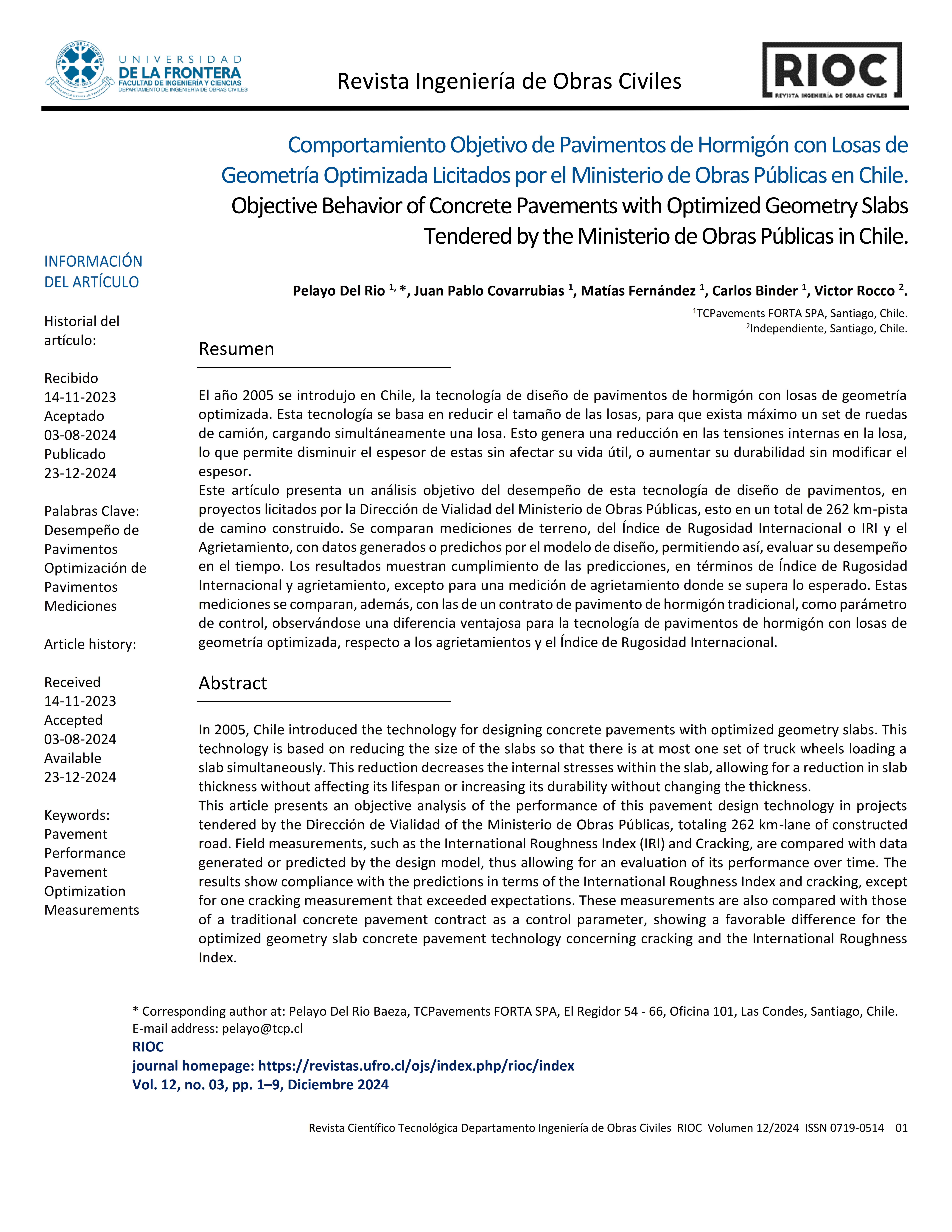Comportamiento Objetivo de Pavimentos de Hormigón con Losas de Geometría Optimizada Licitados por el Ministerio de Obras Públicas en Chile
Keywords:
Pavement Performance, Pavement Optimization, MeasurementsAbstract
In 2005, Chile introduced the technology for designing concrete pavements with optimized geometry slabs. This technology is based on reducing the size of the slabs so that there is at most one set of truck wheels loading a slab simultaneously. This reduction decreases the internal stresses within the slab, allowing for a reduction in slab thickness without affecting its lifespan or increasing its durability without changing the thickness.
This article presents an objective analysis of the performance of this pavement design technology in projects tendered by the Dirección de Vialidad of the Ministerio de Obras Públicas, totaling 262 km-lane of constructed road. Field measurements, such as the International Roughness Index (IRI) and Cracking, are compared with data generated or predicted by the design model, thus allowing for an evaluation of its performance over time. The results show compliance with the predictions in terms of the International Roughness Index and cracking, except for one cracking measurement that exceeded expectations. These measurements are also compared with those of a traditional concrete pavement contract as a control parameter, showing a favorable difference for the optimized geometry slab concrete pavement technology concerning cracking and the International Roughness Index.
Downloads

Downloads
Published
How to Cite
Issue
Section
License
Copyright (c) 2024 Pelayo Del Rio , Juan Pablo Covarrubias , Carlos Binder, Victor Rocco

This work is licensed under a Creative Commons Attribution 4.0 International License.
The authors who publish in this journal accept the following conditions:
- The authors retain the copyright and assign to the magazine the right of the first publication, with the work registered with the Creative Commons attribution license, which allows third parties to use the published information whenever they mention the authorship of the work and the First publication in this journal.
- Authors may make other independent and additional contractual arrangements for non-exclusive distribution of the version of the article published in this journal (eg, include it in an institutional repository or publish it in a book) as long as it clearly indicates that the work Was first published in this magazine.
- Authors are encouraged and encouraged to publish their work on the Internet (for example, on institutional or personal pages) before and during the review and publication process, as it can lead to productive exchanges and a greater and faster dissemination of work Published (see The Effect of Open Access).







